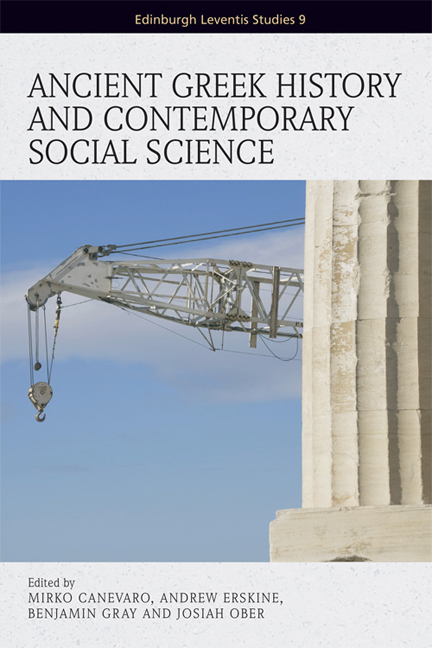13 - The Distribution of Wealthy Athenians in the Attic Demes
Published online by Cambridge University Press: 06 May 2021
Summary
INTRODUCTION
This chapter investigates the spread of wealthy citizens across the 139 demes of Attica, the constituent villages and boroughs of the Athenian state. We look primarily at the number of citizens (or councillors, a proxy for the number of citizens), and the number of wealthy citizens, in each of the demes, and see how closely they are correlated. A close correlation would suggest that one sort of economic opportunity was smoothly spread; a man's origins in a particular deme would be a poor way of predicting whether or not he was wealthy. A weak correlation would suggest that some demes did give their citizens a higher chance of being wealthy. We also consider demes with an unexpectedly high number of wealthy citizens, and ask whether these outliers had anything in common.
LITERATURE REVIEW
A number of scholars have anticipated some of our methods and results. Bresson offered a regression analysis of the number of magistrates and wealthy citizens from the demes of Hellenistic Rhodes. Osborne produced a ‘Wealth Index’ for most of the Athenian demes by ‘taking the number of wealthy men attested per deme from Davies’ work and dividing this by the number of bouleutai provided by that deme’. Taylor provided a regression analysis of known officials against liturgists in the demes. How does our analysis add to theirs? In several ways, we hope.
First, we use a slightly improved dataset. In particular, where our predecessors took paired demes such as Upper and Lower Lamptrai together, we treat them as two separate demes.
Second, we offer a more fine-grained analysis. We look at the distribution not only of the total number of wealthy citizens identified by Davies (1971), but also of various subsets of wealthy citizens. We reflect on the differences in the distribution of wealthy citizens from these different categories. We also think a lot about the differences that the data throws up between individual demes. In particular, we will think hard about demes that are statistical outliers. This goes against Osborne's assertion that ‘the figures for individual demes are clearly too subject to the effect of individual chance attestations to be taken too seriously’. We discuss the reliability of individual results on a category-by-category basis.
- Type
- Chapter
- Information
- Ancient Greek History and Contemporary Social Science , pp. 376 - 402Publisher: Edinburgh University PressPrint publication year: 2018



